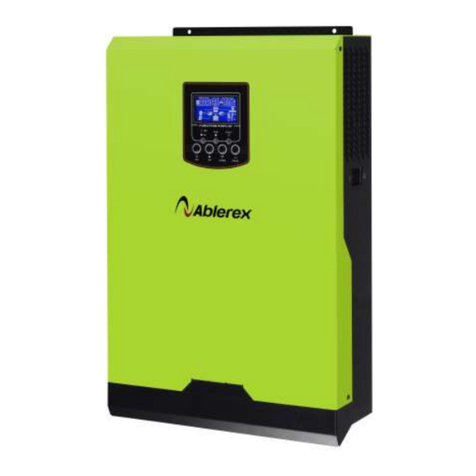
2. Installation
Please read the safety instructions carefully before the PV
inverter installation.
2.1 Unpacking
Although the manufacturer has designed robust
packaging for the product, still the damages may occur during
the shipment. When you received your PV inverter, please
check them carefully. If there is any damage, please notify
your local distributor. (Packaging container can be recycled
and reused.)
Take out the PV inverter from the carton and check the
package content. Standard accessories include:
Two accessory packs.
A data disc
A wall mount kit set (include two wall mounting
brackets and a backplate position paper).
2.2 Installation site requirements
When selecting an installation location and method, be
sure to take the weight of the PV inverter into account.
An appropriate installation location will optimize system
performance, reduce the chances of malfunctions, and
extend the product lifetime. Please follow the guidelines
below for an appropriate location.
PV inverter are designed for outdoor use, with protection
class IP65, and can be installed outdoors and in wet
environments. Power generation capacity of the PV inverter
varies due to ambient temperature, humidity, and installation
location. Recommend locations shall out of direct sunlight,
with ambient temperatures between the recommended
operating temperatures.
ES3000T
ES3680T
ES4000T
ES4600T
ES5500T
-25 °C
~
+50 °C
-25 °C
~
+45 °C
The PV inverter should be hung perpendicularly against
the wall. Please make sure that the wall mounting location
-25 C 50 C
0%~90%
45 C/





























